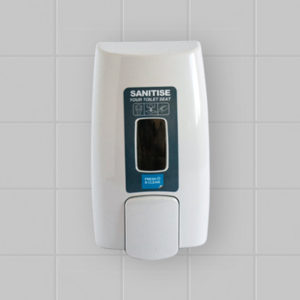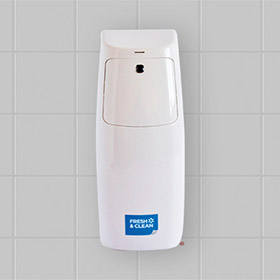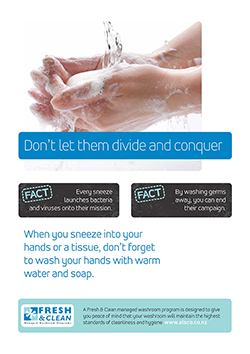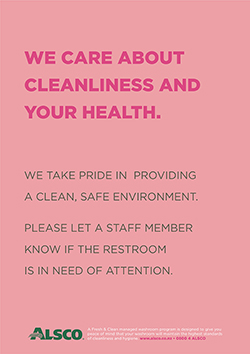We all know how the story goes. A colleague turns up at work feeling a little under the weather. Before long, you hear something, and you hope against hope that it isn’t what you’re thinking.
But you’re right. Your colleague sneezed. Now it’s only a matter of time before the domino effect begins.
In a matter of days, a few other people will have come down with the flu as well. Next stop? One person filing for sick-leave after another.
Now more than ever, it’s nearly impossible to predict New Zealand’s flu seasons.
And, considering that we experience seasonal flu epidemics which can last for as long as half the year, the best thing to do is always be prepared.
While we can recover from the flu in about a week or two, the condition can be serious and even lead to death.
But the flu isn’t the only condition you need to be concerned about.
Colds are also frequently spread from person to person at work.
What’s the Difference Between a Cold and the Flu?
Coming down with the flu can easily be mistaken as having a cold. However, these two conditions shouldn’t be referred to interchangeably, as they are distinct.
A cold is generally milder than the flu, and they have the following differences:
- Fever – it’s rare to experience fever when you have a cold, but usually, this is a common symptom of the flu
- Headache – headaches are normally associated with the flu but it’s unusual to experience them when having a cold
- Aches and pains – colds rarely cause aching while they are a characteristic of influenza
- Stuffy nose – having a cold can easily mean your nose getting stuffy and uncomfortable, whereas this may happen sometimes when you have the flu.
- Sore throat – someone suffering from a cold is likely to experience this. On the other hand, flu may cause a sore throat but not in most cases.
- Weakness – on occasion, a cold can cause you to feel tired and weak. With the flu, it’s almost guaranteed that this feeling will last 2 – 3 weeks.
Now that you know this, do you know what it takes to prevent your workplace from turning into a breeding ground for viruses?
Pay More Attention to Personal Hand Hygiene
It may seem obvious. But you’ll be surprised to know that there are people who casually leave the washroom without washing their hands. One in every five people to be precise.
Then they go about life like nothing is amiss – from shaking hands to handing out files during meetings. And yet, 80% of infectious diseases are spread by hand.
Washing hands properly entails several steps:
- Start by wetting your hands with water.
- Use enough soap to cover every part of both hands.
- Rub your hands from palm to palm.
- Place your right palm over your left palm with your fingers interlaced and vice versa.
- Rub the backs of your fingers against your palms while keeping your fingers interlocked.
- Clasp your left thumb with your right hand and rub in a circular motion.
- Repeat this with your left hand and right thumb.
- Rub the tips of your fingers in the other palm in rotation, going backwards and forwards. Repeat this with the other hand.
- Rinse your hands thoroughly with water.
You can’t wash your hands every time you come into contact with surfaces, objects and other hands where bacteria are likely to be abundant.
For this reason, safeguard yourself by carrying hand sanitiser with you to work always.
Incorporate Handwashing Into Your Workplace Culture
Now that you’ve taken care of your hands, it’s time to shift focus to everyone else’s.
First and foremost, ensure that washrooms at your workplace are stocked with hand soap, and either single-use towels or fully-functional hand dryers.
Next, put up posters as a reminder to encourage everyone to take a minute or two washing their hands.
These would be best placed in a visible spot and they should be coloured in a manner that helps them stand out.
For instance, use colours that contrast with those on the washroom walls. You could also use a bold typeface set in a large font size to make the message pop a bit more.
Download your free cleanliness and health posters today.
Look Into the Condition of Washrooms at Your Workplace

Hand Sanitisers help eliminate the spread of bacteria in your workplace.
One reason why people opt to skip washing their hands is an unpleasant washroom environment. The less inviting the space is, the less time anyone wants to spend there.
It’s necessary, therefore, to keep washrooms clean throughout working hours.
Pay attention to several areas, including the provision of:
-
Air Freshener
Research indicates a correlation between aromatherapy and improved employee productivity. A pleasant smelling washroom prevents people from wanting to leave as soon as they walk in.
-
Toilet Sanitisers

Toilet Seat Sanitisers kill 99.99% of bacteria, germs and microbes.
If you’re doubtful about their effectiveness, toilet sanitisers kill 99% of germs. Having them in your workplace washrooms will make them more sanitary and create confidence in the workforce.
-
Feminine Hygiene Units
This is a great way to make washrooms at work better suited to meet the needs of female employees. Dedicated feminine hygiene units serve as a discreet, hygienic way to dispose of used sanitary products.
Consider Nonpharmaceutical Interventions for your Workplace
Nonpharmaceutical Interventions (NPIs) are measures other than the use of medications that can minimise the risk of infection by flu and other diseases.
While it’s important to get vaccinated against seasonal flu, this may not be a solution in every situation.
Why is this?
When a pandemic flu breaks out, or a new viral infection starts to spread, chances are high that there’s no vaccine yet in existence.
A perfect example of this is the novel coronavirus (2019-nCoV) outbreak.
This strain of a well-known group of similar conditions is a respiratory infection with no vaccine as yet. Moreover, there is no treatment available presently.
“There are no known effective therapeutics against this 2019-nCoV,” – Tarik Jasarevic. Spokesman, World Health Organization
Worse still, it could take a long time to develop a vaccine or treatment for novel coronavirus (2019-nCoV). Although, a team of scientists and pathologists in Australia has isolated the live virus from patients and then sequenced it, which could help global efforts to develop a vaccine.
The sure way to safeguard yourself and your colleagues is to exercise prevention as discussed below.
These can be undertaken at a personal or collective level.
The following are NPI guidelines for the workplace.
1. Make flu prevention part of your planning process
To do this:
- Collaborate with your local health department to develop or review an effective plan for your workplace.
- Create an emergency communication plan. This will help in sharing vital information with employees, clients, and other stakeholders in the event of a flu pandemic.
- Review your attendance and sick leave policies to ensure they are flexible.
- Prepare to alert local health departments about a surge in absenteeism arising from flu-like symptoms.
- Designate a separate room and transportation for sick employees should the need arise.
2. Stay informed
It’s important to stay updated on a progressing pandemic by:
- Maintaining regular contact with authorities and health service providers
- Monitoring the condition through special coverage by reputable news outlets and health bodies such as the World Health Organization
3. Communicate with relevant parties
Once you’ve received updates, you need to relay the information to others.
Ensure that there’s an efficient system of internal communication with all employees, customers and other relevant groups or individuals.
This will keep everyone well informed and ready to take any necessary action.
4. Keep the work environment sanitary
This can be done by cleaning surfaces, desks, shared tools and the like using a disinfectant.
Additionally, provide supplies to prevent the flu from spreading, where possible.
If you’d like more information and NPI resources for your workplace, have a look at this.
Maintaining a hygienic working environment is a continuous process. It calls for personal effort and collective responsibility.
In order to protect yourself from flu and other viruses at work, put the guidelines outlined into practice.
Photo: CDC/Kimberly Smith




